Recent Water Damage Posts
Water Damage Restoration: What to Do When a Leak or Flood Strikes
3/11/2025 (Permalink)
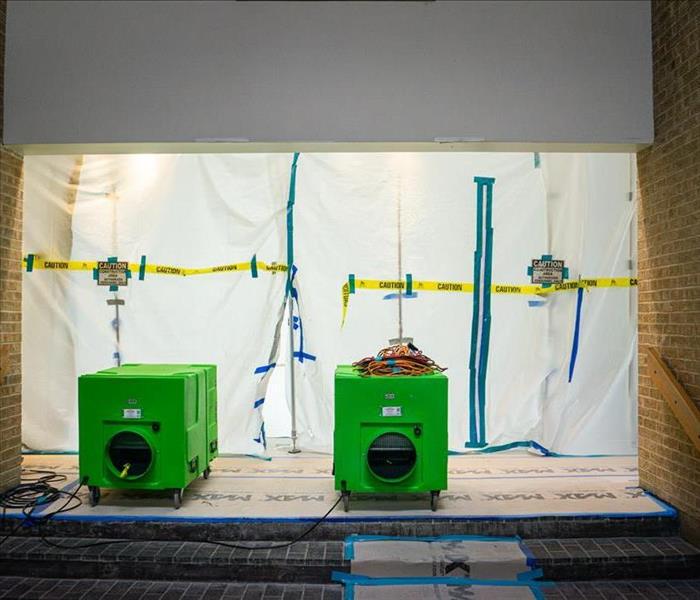 Team Shaw equipment at job site
Team Shaw equipment at job site
Water damage can happen at any time, whether from a burst pipe, a leaking roof, or severe flooding. For homeowners and business owners in Lake Conroe, Cleveland, and Magnolia, taking immediate action is crucial to preventing long-term structural damage and costly repairs. Understanding the right steps to take can help you minimize the impact of water damage and ensure a faster recovery.
Common Causes of Water Damage
Water damage can result from several different sources, including:
- Plumbing Issues: Burst pipes, faulty water heaters, and leaking appliances are among the most common causes of water damage in homes and businesses.
- Severe Weather: Heavy rains and flash floods can overwhelm drainage systems and cause water intrusion.
- Roof Leaks: Damaged or aging roofs can allow rainwater to seep into walls, ceilings, and attics.
- Foundation Cracks: Over time, small foundation cracks can allow water to enter basements and crawl spaces, leading to mold and structural issues.
- Sewer Backups: Blocked or overwhelmed sewer lines can push wastewater back into homes, requiring professional cleanup.
What to Do When Water Damage Occurs
Ensure Safety First
If flooding or water damage occurs, check for potential electrical hazards before entering the affected area. Avoid standing water if you suspect electrical outlets or appliances are submerged.
Stop the Water Source
If possible, turn off the main water supply to prevent further damage. If the water is coming from a leak in the roof, use a tarp to minimize water intrusion until repairs can be made.
Move Valuables to a Dry Area
Quickly relocate furniture, electronics, and important documents to prevent further damage. Place aluminum foil or wooden blocks under furniture legs to prevent water absorption.
Start Water Extraction
If it’s safe to do so, remove standing water using a wet/dry vacuum, towels, or buckets. The longer water sits, the higher the risk of mold growth and structural damage.
Call a Professional Restoration Company
Water damage is best handled by professionals who have the expertise and equipment to properly dry, clean, and restore your property. SERVPRO® of Lake Conroe, Cleveland, and Magnolia offers 24/7 emergency response to mitigate water damage quickly.
How SERVPRO® of Lake Conroe, Cleveland, and Magnolia Can Help
Our team specializes in professional water damage restoration, using industry-leading techniques such as:
- Advanced Water Extraction & Drying – We use powerful pumps and industrial-grade dehumidifiers to remove excess water and dry affected areas thoroughly.
- Mold Prevention & Remediation – Our team ensures that all moisture is properly eliminated to prevent mold growth.
- Structural Repairs – We restore damaged drywall, flooring, and ceilings to their preloss condition.
- Insurance Assistance – We work directly with insurance providers to streamline the claims process and reduce your stress.
If your home or business experiences water damage, don’t wait—call SERVPRO® of Lake Conroe, Cleveland, and Magnolia for fast, professional restoration services. Our team is ready 24/7 to help you recover quickly and effectively.
Why Disinfection After Water Damage Is Important
10/18/2023 (Permalink)
 Disinfection after a water loss is crucial to protect your property after water damage.
Disinfection after a water loss is crucial to protect your property after water damage.
Water damage is a distressing experience for any homeowner in the Lake Conroe area, where heavy rains and flooding are common occurrences. Apart from the visible damage to your property, water damage can also introduce other hazards due to the potential growth of harmful microorganisms. In this blog, we will explore the importance of disinfection after water damage and provide you with effective techniques and products to safeguard your home and family.
Understanding the Need for Disinfection
Water damage can create the perfect breeding ground for bacteria, viruses, and mold. Even after visible water is removed, residual moisture can lead to microbial growth, posing risks to your property. Disinfection is a crucial step to ensure your home is safe and healthy after water damage.
Effective Disinfection Techniques
Cleaning and Removal of Debris:
Before disinfection, ensure that all debris, mud, and contaminated materials are removed from your property. This step is essential to allow disinfectants to work effectively.
Use of EPA-Registered Disinfectants:
When choosing disinfectants, opt for those registered with the Environmental Protection Agency (EPA). These products have been tested and approved for their effectiveness against a wide range of pathogens.
Manual Cleaning and Disinfecting:
For non-porous surfaces like countertops and appliances, manually clean and disinfect with appropriate products. Follow manufacturer instructions for dilution and contact time.
Fogging and Spraying:
In cases of extensive water damage, consider professional fogging or spraying services. These methods can effectively disinfect large areas and hard-to-reach places.
HVAC System Cleaning:
Don't forget to clean and disinfect your HVAC system, as it can circulate contaminants throughout your home. Professional HVAC cleaning can be essential for maintaining indoor air quality.
Recommended Disinfection Products
Chlorine-based Disinfectants: Effective against a broad spectrum of pathogens, chlorine-based disinfectants are commonly used for water damage restoration.
Hydrogen Peroxide-based Disinfectants: These are less toxic and can be an excellent choice for disinfecting surfaces without leaving harmful residues.
Professional Disinfection Services: Consider hiring professional water damage restoration companies like SERVPRO® for thorough disinfection using advanced equipment and techniques.
Safety Precautions
Always wear appropriate PPE, including gloves and masks, when handling disinfectants. Ensure proper ventilation during and after disinfection to minimize exposure to fumes.
Disinfection after water damage is a critical step to protect your property and the people inside it. Using effective techniques and EPA-registered disinfectants can make a significant difference in preventing microbial growth. While DIY cleaning and disinfection are possible for small-scale damage, for extensive water damage, it's best to rely on professional services like SERVPRO® to ensure thorough and safe disinfection.
For expert assistance with water damage restoration and comprehensive disinfection in the Lake Conroe area, contact SERVPRO® today. We're here to help you restore your home and peace of mind.
Defending Against Water Damage: Effective Strategies for Preventing Water Loss
7/20/2023 (Permalink)
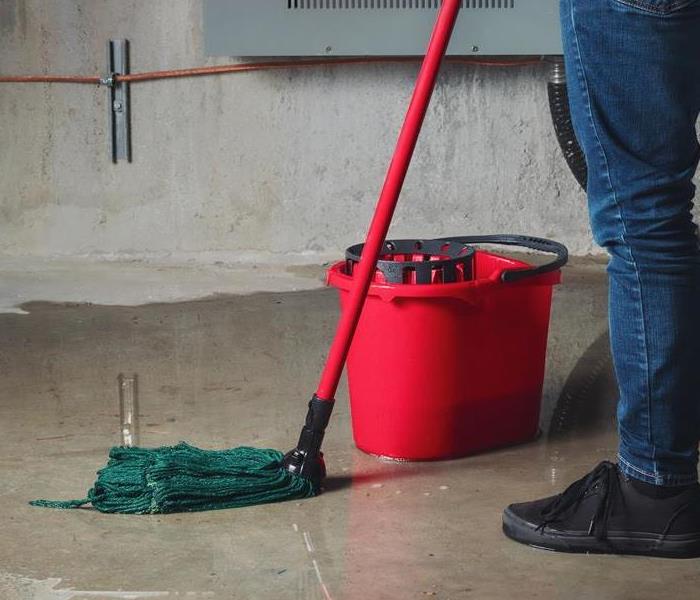 Preventing a water loss can be hard. Be prepared is key to ensuring your home and property is safe.
Preventing a water loss can be hard. Be prepared is key to ensuring your home and property is safe.
Water damage can be a costly and disruptive ordeal for any property owner. Whether it's caused by a burst pipe, leaky roof, or a faulty appliance, water loss can lead to structural damage, mold growth, and the loss of valuable belongings. The good news is that with proactive measures and regular maintenance, you can significantly reduce the risk of water damage and protect your property. In this blog, we will explore effective strategies and practical tips for preventing water loss and preserving the integrity of your home or business.
Inspect and Maintain Plumbing Systems
Regularly inspect your plumbing system for signs of leaks, corrosion, or damage. Check for drips, puddles, or unusual sounds that may indicate an issue. Replace worn-out washers, faulty seals, or damaged pipes promptly. Consider scheduling professional plumbing inspections to identify hidden leaks or potential problems before they escalate.
Maintain Roof and Gutters
A well-maintained roof is crucial in preventing water intrusion. Inspect your roof for missing shingles, cracks, or damaged flashing. Clean your gutters and downspouts regularly to ensure proper water drainage. Clogged gutters can lead to overflowing water, which may seep into the walls or foundation. Trim overhanging tree branches near the roof to prevent damage from falling limbs during storms.
Install and Monitor Water Leak Detection Devices
Invest in water leak detection devices, such as sensors, alarms, or smart leak detectors. These devices can quickly detect leaks, abnormal moisture levels, or changes in water flow and alert you in real-time. Place them near appliances, water heaters, under sinks, and in basements or crawl spaces to catch leaks early and prevent extensive damage.
Be Mindful of Appliance Maintenance
Regularly inspect and maintain household appliances that use water, such as washing machines, dishwashers, and refrigerators with water dispensers. Check hoses and connections for signs of wear or leaks and replace them if necessary. Follow manufacturer guidelines for cleaning and maintenance to ensure optimal performance and prevent water-related mishaps.
Properly Seal Windows and Doors
Ensure that windows and doors are properly sealed to prevent water infiltration during heavy rain or storms. Inspect and replace damaged weatherstripping and caulk gaps or cracks around frames. Proper sealing not only prevents water from entering but also enhances energy efficiency by reducing drafts.
Install Sump Pump and Backup Systems
For properties prone to basement flooding or excess groundwater, consider installing a sump pump. A sump pump automatically removes water from the basement, preventing flooding and water damage. Additionally, installing a backup sump pump or a battery-powered backup system ensures continued operation during power outages.
Know Your Water Main Shut-off Valve
Familiarize yourself with the location of your water main shut-off valve. In case of a sudden water leak or pipe burst, shutting off the main water supply promptly can minimize damage. Regularly test the valve to ensure it is in proper working condition.
Preventing water loss requires a proactive approach and regular maintenance of your property's systems and infrastructure. By inspecting and maintaining plumbing systems, monitoring appliances, and addressing potential issues promptly, you can significantly reduce the risk of water damage. Additionally, taking measures to maintain your roof, gutters, and sealing openings will fortify your property's defense against water intrusion. Remember, vigilance and preparedness are key in protecting your home or business from the costly and disruptive effects of water loss.
How To Care For Your Belongings After Water Damage
3/14/2023 (Permalink)
 Water damage can leave you feeling hopeless, give SERVPRO a call today!
Water damage can leave you feeling hopeless, give SERVPRO a call today!
Water damage can be devastating to your belongings and home. When flood waters recede, you might find yourself with some musty furniture, a mildewed carpet, damaged books, or even worse: mold. But there's no need to panic—there are plenty of ways to restore your belongings after they've been exposed to water.
Dispose of items that are ruined
It is not an easy task to complete, but it is important to sort through all of your affected belongings and determine if the belongings are ruined or not. Once you have determined what items are ruined, it's time to dispose of them.
Disposing of items that have been damaged by water can be a challenge. To avoid mold growth or further damage, you need to keep the affected belongings isolated from other items until they are properly cleaned and dried. The best way to do this is by putting the ruined items in plastic bags--you can even seal them with tape if needed--and storing them in a dry place with good ventilation until they can be taken away for disposal.
Air-drying
If your items are wet after a loss, try air-drying your belongings indoors. Open windows to create a natural airflow or use fans to circulate the air throughout your home. You can also dry items in a garage or other dry areas if necessary.
Air drying is usually safe for most materials, but there are still some things you should avoid doing while they're drying:
- Don't expose wet clothing or bedding directly to heat sources like radiators or heaters until they're completely dry.
- Avoid hanging up wet clothes on hooks; instead lay them flat on a surface like carpeting so they don't stretch out of shape as they dry.
Gently clean
If your belongings have been affected by a water loss, there is no surprise that the items might be dirty. The first thing to do is to gently clean the affected items with a cloth or a soft brush. Don't use a pressure washer, steam cleaner, or harsh chemicals. This can cause more damage and make it harder for you to get your belongings back in good condition.
If you have books, albums, or photos that have been damaged, do not attempt to clean them with a soft brush or cloth, this could cause more damage. Instead, allow restoration professionals, such as SERVPRO of Lake Conroe, to clean and repair those items for you!
Call a restoration professional for help
If your belongings have minor water damage, it might be possible to clean the items on your own. If the damage is more severe, don't try to clean them yourself. The best way to restore those belongings is with the help of a professional restoration company. They can help you with drying out items, cleaning them, and disposing of those that cannot be saved. Water damage restoration companies use advanced technology to clean, sanitize, and restore your damaged belongings as much as possible so that it looks like new again!
There are things you can do to avoid further harm to your belongings.
If you have water damage in your home, there are things you can do to avoid further harm to your belongings. If possible, remove all wet items from the area and place them in a safe place. You may want to consider hiring professionals who specialize in drying out homes after a flood or storm has occurred.
If you don't have the time or tools for this process yourself, call a restoration company for content restoration services.
We hope that this guide has helped you understand the process of restoring your belongings after a water damage incident. Water damage can be devastating, but with the right knowledge and tools, you can make sure it doesn't ruin your life!
What Are The Common Causes of Water Damage
11/18/2022 (Permalink)
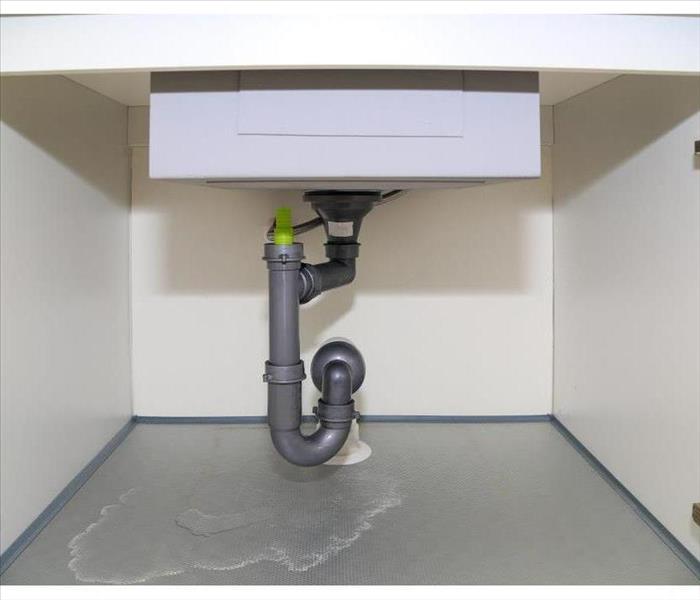 Leaks can be caused by a number of factors.
Leaks can be caused by a number of factors.
Common Causes of Water Damage
Water damage is one of the most common home emergencies. It happens when a water source, usually a sink or toilet, leaks and causes water to seep under your flooring into the crawl space below. This can happen in any room of your house and whether you live in an apartment or a house, it affects everyone. The good news is that you can avoid this from happening by taking some simple steps. By being prepared for water damage issues, you will be able to deal with them quickly if they occur
Plumbing, Sink, Toilet, and Washing Machine Leaks
Plumbing leaks are a common cause of water damage. Leaks can be caused by a number of factors, including loose pipes, worn-out washers or hoses, and corrosion. Toilet leaks often occur when the ballcock in your toilet tank breaks or gets stuck inside the tank, resulting in an overflow that results in foul odors and stains. You may also notice wet spots on your floor near the baseboards or walls; this is likely due to a leaky toilet seal that causes water to spill over into nearby areas.
Sinks can also leak when faucet washers wear out or get stuck on debris buildup within them, which allows more water than usual to escape through these openings even when they're not being used. Another common source of sink leaks comes from under-the-sink drains—if these drains become clogged with hair and dirt particles (which often happen because they're difficult to reach), then it can cause excessive water pressure buildup behind them when you turn on one of those drains' faucets such as hot/cold taps or shower-heads; this pressure buildup results in flooding due to cracks opening up within those drains' surfaces after being subjected too much stress over time without proper maintenance!
Frozen Pipes/ Pipes Bursting
If you live in an area where freezing temperatures are common, it’s important to be aware of the signs that your pipes might be about to burst. If you find yourself with a frozen pipe, there are some steps you can take before calling a plumber.
First and foremost: don't try to thaw the pipe yourself by running hot water through it! This can cause small cracks in the pipe wall that will only get worse as time goes on. Instead, use a hair dryer or heat gun at a safe distance from the affected area until it's no longer frozen (this may take hours).
If this doesn't work and you have no other choice but to call for professional help—and believe us when we say this is not something you want happening again.
Leaking Water Heater Tank
The water heater tank is the most common cause of water damage in your home. Water heater tanks can leak for a variety of reasons, such as a faulty pressure relief valve or even corrosion. If you suspect that your water heater tank could be leaking, check it out immediately and take care of any issues that arise before they worsen.
Leaking water heaters are dangerous and can cause mold growth around your home. In some cases, leaking tanks may even cause structural damage to walls or floorboards if the leak is not addressed right away.
Roof Leakage
Roof leakage is another source of water damage, and can be caused by a variety of reasons:
- a roof leak due to faulty roofing material, such as shingles or tiles
- an undetected leaky roof joint or flashing
- damage from the natural elements, such as storms and high winds, which may cause leaks in an otherwise undamaged roofing system
Call the Professionals
In the case of water damage, it is critical to address the problem immediately. The longer you wait, the more damage will occur and the more expensive it will be to fix. Water damage restoration companies have different water extraction methods and equipment that allow them to remove water from your home or business in a timely manner. These companies specialize in wet carpet cleaning, mold remediation, and other services related to water removal and repair. In addition, they can help identify any underlying problems with your plumbing system so that they do not happen again in the future.
Water damage can be very stressful and overwhelming. Making sure that you are hiring SERVPRO of Lake Conroe to handle the situation is critical. We will have your Conroe, TX home back to normal as soon as possible.
What Is Category 1 Water Damage?
8/29/2022 (Permalink)
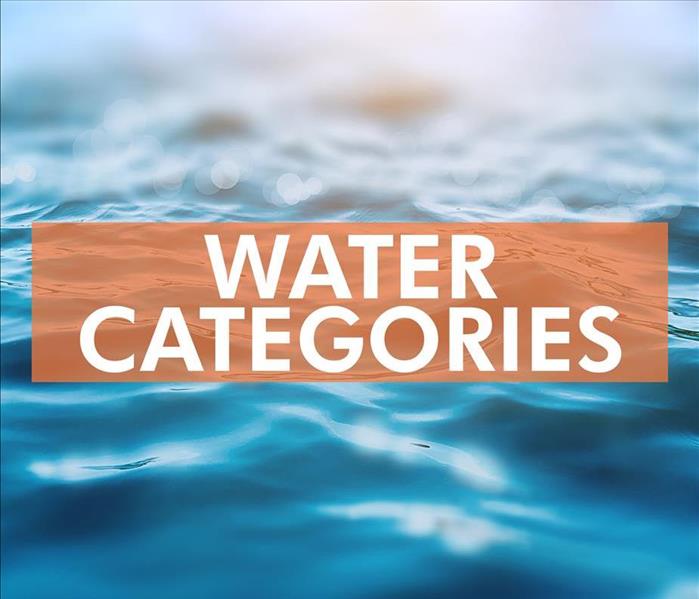 Water Categories
Water Categories
Water Categories
So you've got a burst pipe in your building in Willis, TX, and the water damage restoration experts have informed you that you have Category 1 Water Damage. It sounds awful, but what exactly does it mean?
Category 1 - Clean Water
If you're experiencing a flood, this is the least dangerous type. The water is from a clean source, such as a sink overflow, a broken pipe, or a leaky supply line.
The flood is still damaging, but the water is not contaminated. As with all floods, you'll want to arrest the spread of the water immediately to minimize the damage.
Stop the source
Pump or siphon the flood water
Dry materials and contents thoroughly
Since the water source is clean, you have fewer concerns than you would with the other categories of floodwater.
Category 2 - Gray Water
A Category 2 Flood is from a water source that contains contaminants from household use, such as detergents or biological waste. It's not clean water, but it doesn't contain sewage either. The source of gray water is usually a tub, sink, dishwasher, or washing machine that has backed up or overflowed.
Clean-up requires removing any residual chemicals or organic matter left behind after draining and drying is complete.
Category 3 - Black Water
The most serious flood occurs with black water; this is called Category 3 flood damage. The source of this floodwater is sewer backup or toilet overflow. Sewage contains toxic contaminants that need to be eradicated.
If you have a Category 3 flood, you will likely need professional help to clean the building successfully. Unlike clean water, black water can lead to black mold if not properly treated.
All flooding is damaging and needs to be handled quickly, but Category 1 is the least complicated to clean up. If the flood contains gray water or black water, you may need professional help to remove the contaminants and ensure that your building is properly sanitized and safe for use.
3 Steps To Follow When Replacing a Toilet
8/2/2022 (Permalink)
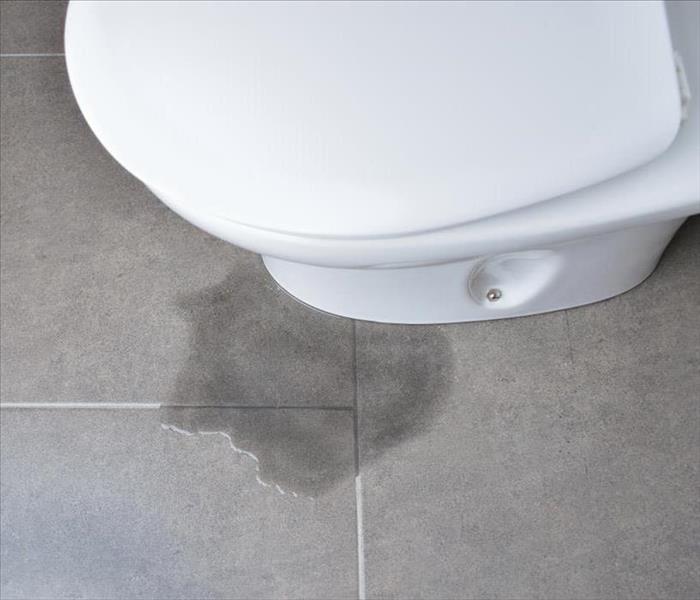 Ignoring a toilet leak can potentially lead to tremendous water damage.
Ignoring a toilet leak can potentially lead to tremendous water damage.
Steps To Follow When Replacing a Toilet
When you have a leaking toilet in your Conroe, TX, home and can't find an adequate toilet repair, you need to replace it. Ignoring a toilet leak can potentially lead to tremendous water damage, so you want to address the issue as soon as possible. Here are three steps to follow when replacing a toilet.
1. Remove the Old Toilet
The first step in replacing the leaking toilet is to remove the faulty one. Turn off the water supply line and flush the toilet a few times to empty the tank as much as possible. Unscrew the supply line from the tank and undo the bolts securing the toilet to the floor. Gently wiggle the toilet back and forth to loosen it from the wax ring and pull the toilet up. Move the toilet onto an old cardboard box and use a sponge or cup to get the remaining water out of the tank.
2. Replace the Seal
Remnants of the wax seal will likely still be on the toilet flange, so clean that off thoroughly to ensure that the next seal sits securely in place. Many water damage mitigation professionals recommend using a non-wax seal over a wax one. Wax seals wear down over time and are highly susceptible to breaking if the toilet bolts loosen and allow the toilet to move even a little bit. Rubber seals are especially helpful if you have a deeper than normal flange because the seals can easily be stacked together, while wax seals can't.
3. Install the New Toilet
Once you replace the seal, place your new toilet on the flange bolts. Carefully line the holes up on the bottom of the toilet, so the bolts slide into place. Have a friend push down on the toilet while you tighten the bolts to ensure there is adequate compression on the seal. Reattach the water hose line to the toilet tank and turn the water main back on.
While it might initially seem like a daunting task, replacing a leaking toilet is a breeze when you follow a few simple steps.
Key Things To Know About Category 3 Water Damage and Its Cleanup
7/24/2022 (Permalink)
 Even a small toilet overflow with waste can be as hazardous as high flood water.
Even a small toilet overflow with waste can be as hazardous as high flood water.
Category 3 Water Damage
There are three distinct categories of water damage that are determined by contamination level: clean water (Category 1), grey water (Category 2) and black water (Category 3). All three can be detrimental to a space if left untreated, though Category 3 poses the biggest threat and requires swift action to clean up. Here are some key things to know if black water impacts your Willis, TX, business.
Black Water Is Highly Contaminated and Harmful
Category 3 damage boasts the name black water given its substantial contamination levels. Dangerous bacteria, viruses and toxins are present in the water. Common causes of Category 3 water damage include:
- Broken sewer lines
- Rising seawater
- Groundwater flooding
It is also likely that grey water that is left untreated for more than 24 hours can become more contaminated and evolve into black water.
Flood Water Is Among the Most Serious Cases
Black water damage occurs in any natural flood, whether it is from heavy rainfall or a storm that elevated sea and river levels. Due to the several inches (and in severe instances, feet) that flood water can pile up, building damage can be extensive. The toxins carried in this water can seep into the structure and become a major repair project.
The Cleaning Process Is Critical
Given the risks that black water presents, always call on a water damage restoration company to tackle the mess. These professionals specialize in extracting the water, drying the space and deep cleaning every area impacted by black water. Sanitizing is crucial for any size space, as even a small toilet overflow with waste can be as hazardous as high flood water.
Category 3 water damage is extremely concerning no matter how it presents itself. If your property is impacted, be sure to properly clean the space with the help of trusted professionals for the highest level of safety.
Easy Ways To Troubleshoot Your Irrigation System
6/20/2022 (Permalink)
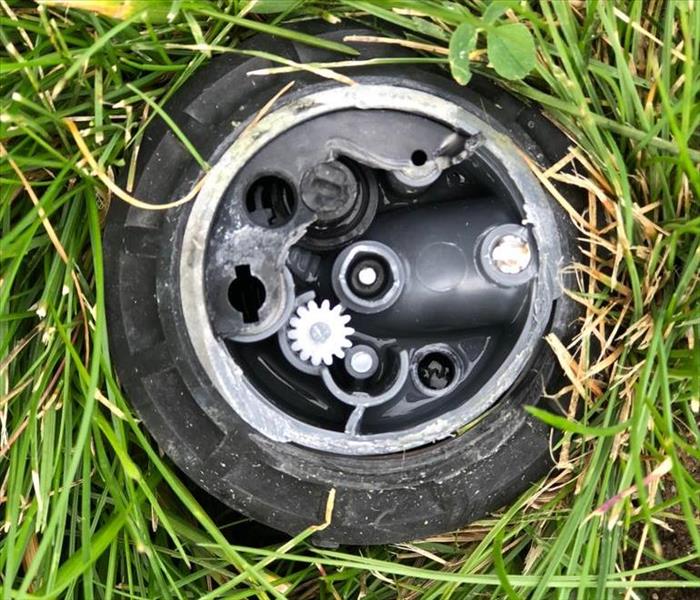 Broken sprinkler heads cause water to gush out or spray inconsistently.
Broken sprinkler heads cause water to gush out or spray inconsistently.
Troubleshoot Your Irrigation System
If your commercial irrigation system malfunctions, it will fail to water your property’s lawn evenly, and your grass may become waterlogged. Standing water can potentially lead to flooding. The key to fixing your system’s problem is finding the source of the issue. If you have a sprinkler system in Magnolia, TX, follow the troubleshooting tips below to prevent a simple error from damaging your building.
External Issues
Sometimes, irrigation problems stem from sources outside of the existing system. Tree roots can grow into the sprinkler pipes, causing blockages or cracks. If the water cannot flow freely through the pipes, you may have problems with water pressure. A broken line can also lead to flooding.
Excessive foot traffic across the property could also be the source of your irrigation issues. Pressure from bikes, strollers or large groups of people compacts the soil, adding to the weight on top of the system’s pipes. If you have flooding from a cracked or broken line, work with a restoration and clean-up team to take care of the damage.
Irrigation System Problems
The problems could also come from a malfunction within the system. When one part stops working correctly, the sprinklers may not run properly. Some common issues include:
- Broken sprinkler heads cause water to gush out or spray inconsistently.
- Corroded or broken electrical wires cause the system’s timer to give out.
- Cracked or broken pipes cause water to seep out of the sprinklers and create standing pools of water or dry patches where the water can’t reach.
- A broken solenoid or valve will often lead to unusually high or low water pressure and seeping water.
Troubleshooting your irrigation system when it first presents a problem will prevent any malfunction from damaging the landscaping and the building. Save yourself time and money by resolving your sprinkler issues from the get-go.
How To Keep Pipes From Freezing
2/15/2022 (Permalink)
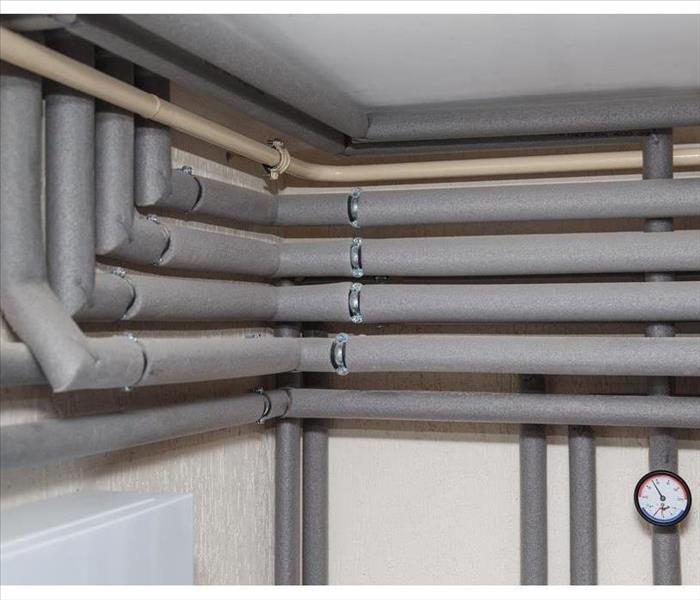 Keep your pipes covered with insulation.
Keep your pipes covered with insulation.
Three Tips To Keep From Having Frozen Pipes
Waterline repair in Magnolia, TX can be overwhelming and expensive, so taking care of your pipes during freezing weather is vital to preventing costly repairs. When water freezes in pipes, it creates incredible amounts of pressure that can cause the metal to crack and even burst. When you are having particularly cold weather, use these three tips to keep from having frozen pipes.
1. Run water through faucets periodically. Moving water does not freeze, so it is vital to keep the liquid moving through the pipes during cold weather. Constantly letting water drip from kitchen and bathroom faucets keeps the water flowing just enough to prevent it from getting too cold. Alternatively, run water at full blast for a couple of minutes every hour to keep it moving through the pipes.
2. Maintain a steady temperature. Many homeowners lower their heat at night in an effort to save money on their electricity bill, but doing so could cause your pipes to weaken. Changing temperatures may affect the metal by allowing it to become too cold, so keeping the thermostat at one temperature can help reduce the amount of stress on the pipes. Even if you will be away from home during freezing weather, set the thermostat above 55°F to keep from having frozen pipes.
3. Keep pipes warm. Most pipes are housed in hidden locations with little insulation, so they are likely to freeze. Open cabinet doors to allow warm air to circulate freely around the pipes, or wrap warm towels around pipes to help insulate them. Both methods help keep pipes warm, which reduces the risk of the water inside them becoming cold enough to freeze.
Frozen pipes are never fun to deal with, but with proper care and precautions, you may be able to prevent them from freezing. Using these three tips may help you avoid costly water line repair and keep pipes functioning correctly.



 24/7 Emergency Service
24/7 Emergency Service









